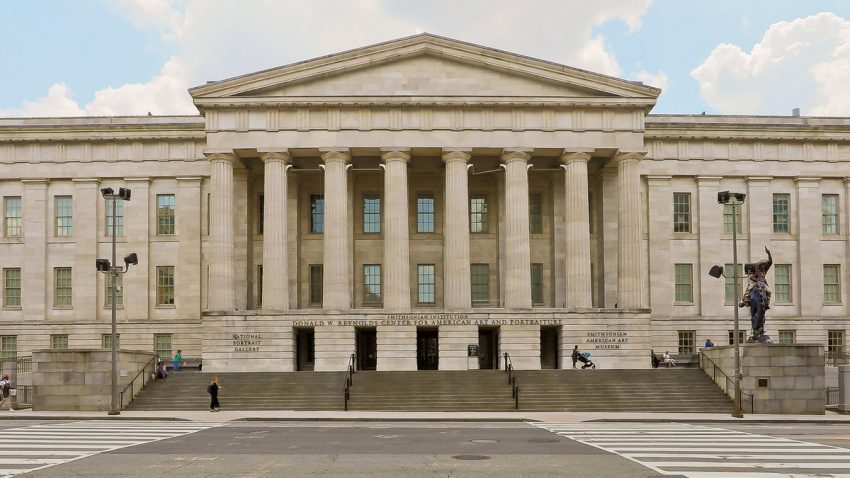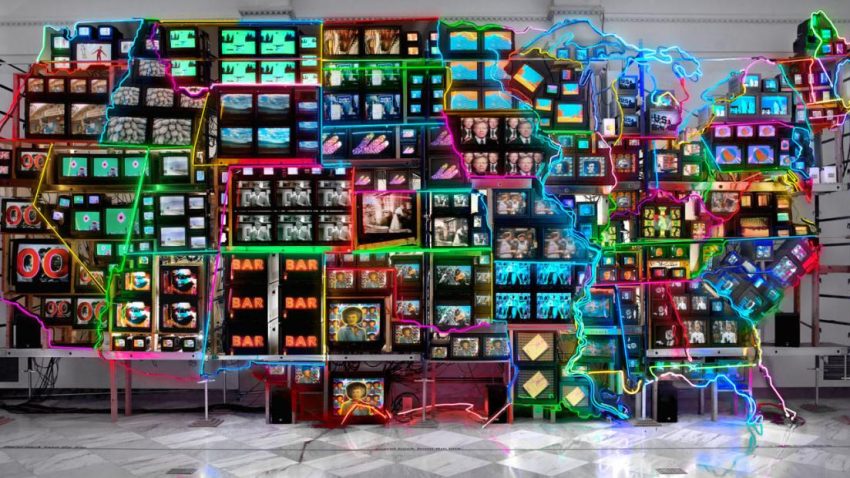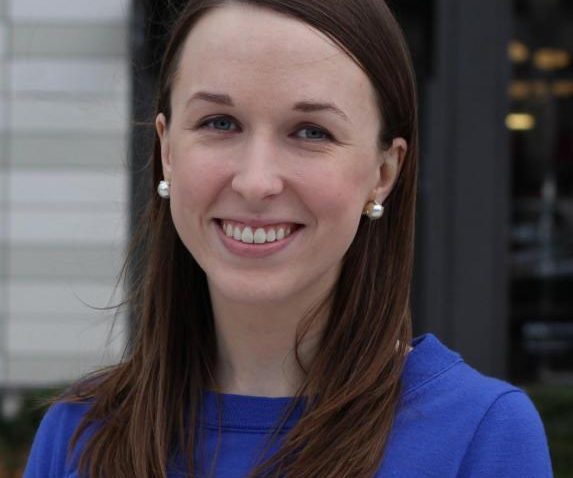Hi everyone! Tomorrow (Wednesday) we will be meeting virtually with the Smithsonian American Art Museum. Arguably, I believe that the Smithsonian and all of its sections are some of the most well-known institutions that we will examine in our class this month– not only due to its almost 200-year history & its large and diverse collections but also due to the educational aspect of the overall Smithsonian.
In a quote directly from the Smithsonian American Art Museum’s website that captures the massive scale of their collection and significance within the nation;
“The Smithsonian American Art Museum, the nation’s first collection of American art, is an unparalleled record of the American experience. The collection captures the aspirations, character, and imagination of the American people throughout three centuries. [This] museum is the home to one of the largest and most inclusive collections of American art in the world. Its artworks reveal key aspects of America’s rich artistic and cultural history from the colonial period to today.
The museum has been a leader in identifying and collecting significant aspects of American visual culture, including photography, modern folk and self-taught art, African American art, Latino art, and video games. The museum has the largest collection of New Deal art and exceptional collections of contemporary craft, American impressionist paintings and masterpieces from the Gilded Age. In recent years, the museum has focused on strengthening its contemporary art collection, and in particular media arts, through acquisitions, awards, curatorial appointments, endowments, and by commissioning new artworks.”
Their mission statement is as follows: “The Smithsonian American Art Museum is dedicated to collecting, understanding, and enjoying American art. The Museum celebrates the extraordinary creativity of artists whose works reflect the American experience and global connections.” The Smithsonian American Art Museum possesses works from the colonial period until now, aiming to educate, research, inform, and inspire others across the nation. Due to their massive collection and established educational presence, the Smithsonian is well-known and accessible to everyone, with free admission.
The Smithsonian American Art Museum began when a man named John Varden started an American art collection in his home in DC in 1829, eventually growing to a size that the collection was relocated to the new Patent Office Building in 1841, along with being named the “National Institute” for the US government’s artistic & historic item collection. In 1846, the establishment of the Smithsonian led to the disbandment of the “National Institute.” However, a fire at the new Smithsonian Castle in 1865 moved many of the items to governmental loan & grew collectors’ disinterest in furthering the museum’s collection.
In 1906, thanks to the federal court, the Smithsonian’s collection was officially recognized as a “National Gallery of Art,” spurning art collectors to gift to the museum, expanding the collection of prized artworks even further. 30 years later, the “National Gallery of Art” was renamed the “National Collection of Fine Arts” in 1937, focusing on the impact that living artists had on American culture. In 1968 the building was renovated into the grand museum that we know today. After two additional name changes, one in 1980 to the “National Museum of American Art” and another in the 2000’s to the “Smithsonian American Art Museum,” the Smithsonian continues to grow its collection & rotate out traveling exhibitions to this day. Boasting almost 4 floors of unique art exhibits (such as the National Portrait Gallery), some of their exhibits have the opportunity to either travel into other states or accept exhibitions from other parts of the nation. Some of their current traveling exhibits include “New Glass Now,” “Sargent, Whistler, and Venetian Glass: American Artists and the Magic of Murano,” “Artist to Artist,” and much more.

The Smithsonian American Art Museum plays many roles within the nation’s communities; an example of this is by providing educational opportunities for students, teachers, and the overall public with its national education programs. Another example is the research within their archives or scholarships they provide to communities. Lastly, they are able to connect with the public through their online platforms & continue to update their collections with traveling exhibitions (which were first introduced in 1951).
The overall Smithsonian is funded by a collection of federal (government) pay along with gifts from their donors. Connecting Democracy with The Arts, the Smithsonian American Art Museum is federally recognized and celebrated by the nation as, quote; “[part of] a unique public-private partnership that has proven its value as a cultural and scientific resource for more than 170 years.”
I have a bit of a personal connection with DC/the Smithsonian from when I was younger that I haven’t been able to share quite yet with the class (& it’s why I chose a section of the Smithsonian institution to present)! Before my family and I moved to Washington State we had previously lived in Alexandria, VA, and sometimes took trips to DC during holidays to visit museums (such as the Smithsonian). Looking back, the immense scale and quantity of their collections were not only impressive & educational, additionally, but it might also have had some impact on me that helped me become the artistic individual & studio art major that I am today!
Wrapping up my anecdote & moving on to preparing for tomorrow’s class, I’ll be introducing our guest speaker, Phoebe Hillemann! Hillemann has been working as the museum’s Teacher Institutes Educator for over 9 years, managing the Smithsonian American Art Museum’s summer teaching institutes. She is also from Northfield! 
I’d like to keep a few questions in mind during our upcoming virtual visit with Phoebe Hillemann– firstly, how has the recent pandemic affected the accessibility of the Smithsonian American Art Museum to the public, and what extra steps have been taken to strengthen (the museum’s) SAAM’s connection with its community in times of disconnection like these? Additionally, I want to ask Hillemann what she thinks about democracy & the arts like what we had previously discussed in this course– do they need each other, or can only one exist independently? Lastly, I wonder if she has noticed if there have been any negative implications from being partly government-funded (for example, being unable to display certain exhibits)? Or has the private funding allowed these exhibits?
Anyways, I’m super excited for our discussion tomorrow, along with hearing Hillemann discuss visual art & the outreach that the Smithsonian American Art Museum accomplishes! Thank you all for your time and I’ll see you guys tomorrow on zoom!
